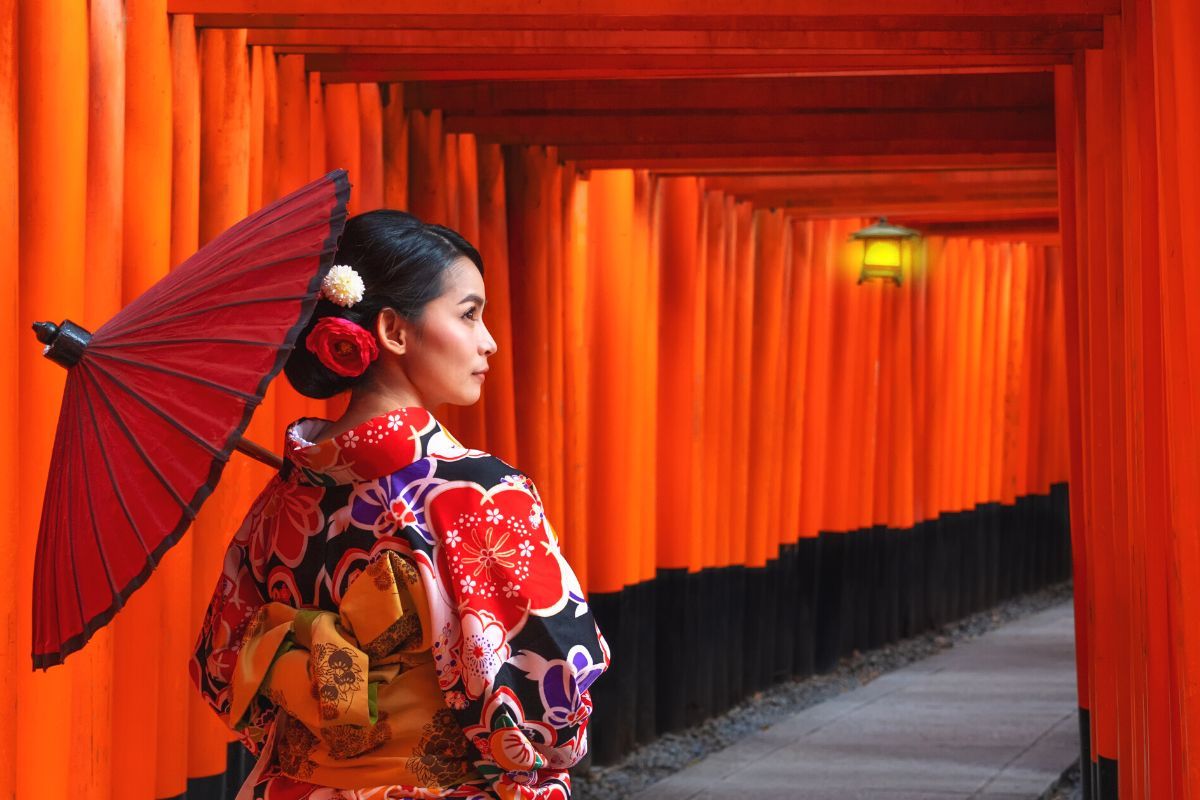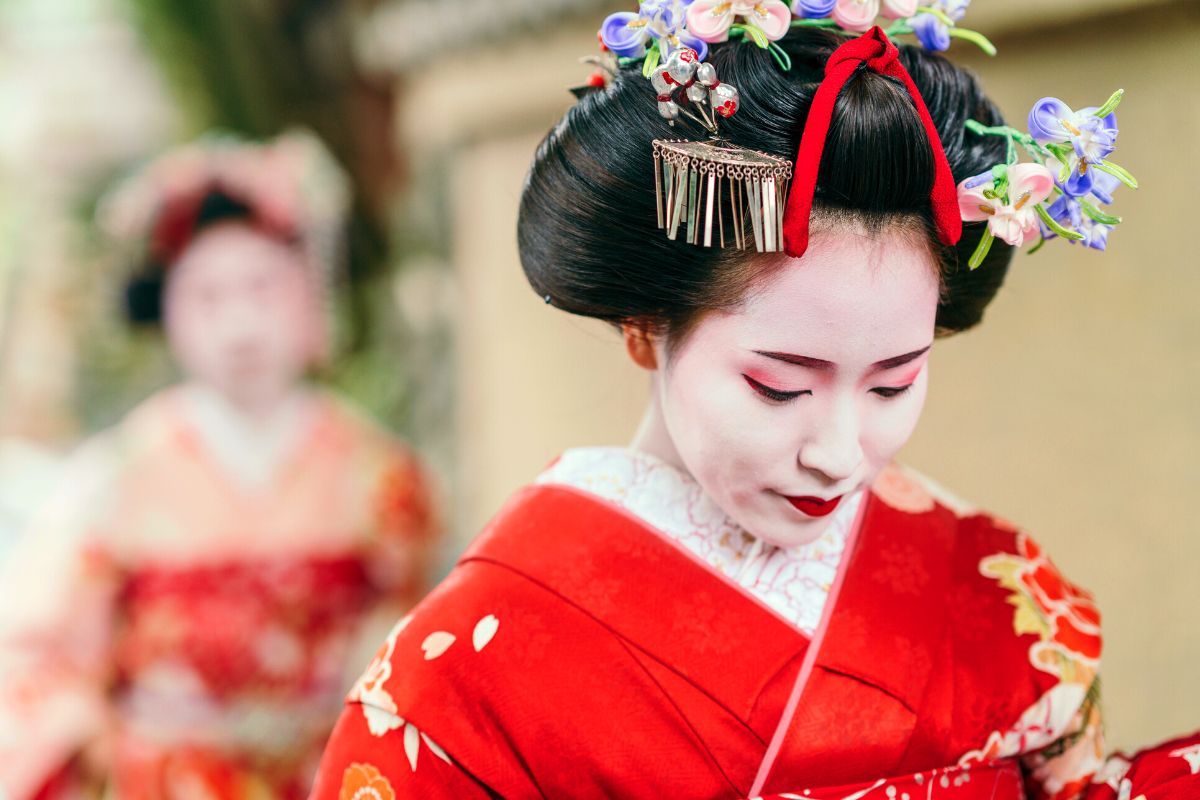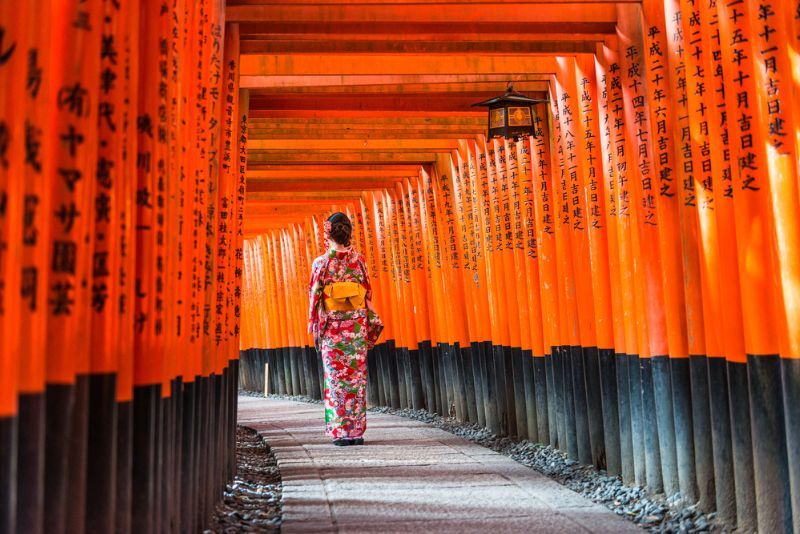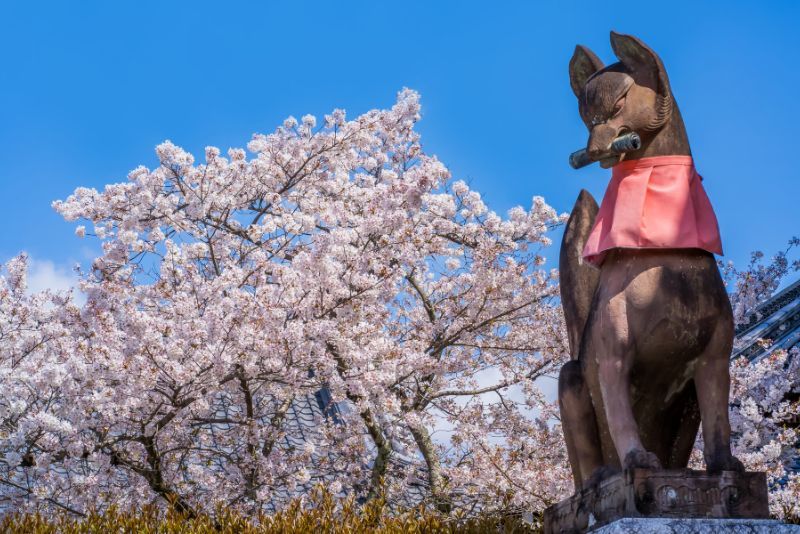Fushimi Inari: Tickets and Tours
Whether wandering through the shrine's red torii gates or traversing the forested trails that lead up to the top of Mount Inari, a Fushimi Inari tour guarantees a mystical experience through this special place in southern Kyoto.
Discover hidden hiking paths around this Shinto shrine on a secluded walk away from the crowds of tourists, where you'll see abandoned altars among the green tranquility of the bamboo groves and forest of evergreens.
Whether wandering through the shrine's red torii gates or traversing the forested trails that lead up to the top of Mount Inari, a Fushimi Inari tour guarantees a mystical experience through this special place in southern Kyoto.
Discover hidden hiking paths around this Shinto shrine on a secluded walk away from the crowds of tourists, where you'll see abandoned altars among the green tranquility of the bamboo groves and forest of evergreens.

(0/24) checking Musement...
Whether wandering through the shrine's red torii gates or traversing the forested trails that lead up to the top of Mount Inari, a Fushimi Inari tour guarantees a mystical experience through this special place in southern Kyoto.
Discover hidden hiking paths around this Shinto shrine on a secluded walk away from the crowds of tourists, where you'll see abandoned altars among the green tranquility of the bamboo groves and forest of evergreens.

Here's everything you need to know about Fushimi Inari, one of the most mystical attractions in Kyoto.
How much do Fushimi Inari tickets cost?
As with all shrines in Kyoto, admission to Fushimi Inari is free. However, you can give a donation if you would like to make a wish or prayer at the shrine.
What are the best Fushimi Inari tours?
It's a good idea to book a Fushimi Inari tour, as there are many lesser known paths through the forest that lead to the top of the mountain near Fushimi Inari. A local expert guide will help you find the most secluded paths while explaining the history of the abandoned shrines you'll see along the way.
Hidden Hiking tour
Embark on a unique, small-group Fushimi Inari tour that ventures off paved paths and onto forest trails for a more intimate experience. The tour includes visits to hidden bamboo groves, secluded trails with ancient altars and picturesque spots for memorable photos, guided by a local expert.
Starting at Tofukuji Station, the tour explores quiet neighborhoods and small shrines en route to the mountain. Participants will ascend through the famous vermilion torii gates to the summit before descending via a forested trail. The tour concludes at the main shrine, where participants can enjoy local street food.
Kyoto Temple and Shrines tour
Discover Kyoto's must-see historical sites on a tour departing from Osaka, beginning with the iconic Fushimi Inari — a shrine dedicated to the god of rice and sake and known for its thousands of orange torii gates.
Next, visit Kiyomizu-dera for a traditional Japanese lunch, followed by the stunning gold-leaf-covered Kinkaku-ji Zen Temple, which is also known as The Golden Pavilion.
Conclude the tour at Arashiyama, famous for its picturesque Togetsu-kyo bridge and bamboo forest road. Browse souvenir shops before returning to Osaka, capturing unforgettable memories and photographs along the way.
Fushimi Inari and Gion District tour

Gion is Kyoto's most famous geisha district and is known for its traditional wooden machiya merchant houses, ochaya teahouses and picturesque Shirakawa Canal lined by willow trees and high-class restaurants. Check out the geiko and maiko (geishas and their apprentices) while exploring the area.
You will also have a chance to visit the Yasaka Shrine, which is over 1350 years old and is situated between the Gion and Higashiyama districts. It is renowned for its Gion Matsuri summer festival, as well as being a popular cherry blossom viewing spot.
Other notable sites on this tour include Tatsumi Daimyojin Shrine and Kiyomizu-dera Temple, which is a Kannon Reijo or "holy place" dedicated to Kannon, a deity of compassion.
Kyoto Sagano Romantic Train
Experience picturesque destinations in Kyoto on a day tour that begins with the scenic Sagano Romantic Train ride along the Hozugawa River on the Sagano Scenic Railway.
Explore Arashiyama's forests and enjoy lunch before visiting the famous Kiyomizudera temple.
End the tour at the iconic Fushimi Inari with its endless tunnel of scarlet torii gates, before returning to Namba station for a day filled with breathtaking Kyoto scenes.
What will you see at Fushimi Inari?
Constructed in the early 8th century, Fushimi Inari is one of Kyoto's largest and most revered Shinto shrines. The total area of the shrine is nearly one square kilometer, which is covered in bamboo groves and evergreen trees.
You can hike along its many forest paths, which provide refuge from the sun and the noisy crowds. If you follow the paths up to the top of the mountain, you'll be rewarded with spectacular views over Kyoto.
Torii Gates

Fushimi Inari is most well-known for the thousands of vermilion torii gates that form a one-of-a-kind path through the lush forest of the Inari Mountain. This is an integral part of this Shinto shrine dedicated to Inari — the god of rice, sake and prosperity.
The bright red-orange color of the gates is supposed to ward off evil spirits and represent the bountiful harvests provided by the god Inari. Today, there are about 10,000 of these gateways leading up the mountain. Since the 17th century, people have constructed these gates as an offering to this deity of prosperity.
Fox Statues

Another notable feature of the Fushimi Inari shrine are the many stone fox statues dotting the premises. These statues are called "byakkosan," or white foxes, and symbolize the god Inari's messengers.
How to get there?
Fushimi Inari is located in southern Kyoto in between the Minami and Yamashina Wards. From the Kyoto Imperial Palace, it's about 20 minutes away by car and 30 to 40 minutes away by public transport.
By train
Take the JR Nara Line to Inari Station and then walk 5 minutes to Fushimi Inari. If you're traveling from the Kyoto Imperial Palace, take the Karasuma Line towards Takeda and switch to the JR Nara Line at Kyoto Station.
By electric railway
Take the Keihan Line to Fushimi-Inari Station, then walk for about 10 minutes to Fushimi Inari.
By Bus
Take the Minami 5 Line to the Inari Taisha-mae stop, then walk about 10 minutes until you reach Fushimi Inari.
By car
You can take the Kyoto Minami Interchange on the Meishin Expressway, which is about about 20 minutes away, or you can take the Kamitoba Exit on the Hanshin Expressway, which is about 10 minutes way.
Please note that the official website highly recommends traveling by public transport instead of by car due to the limited parking area around the shrine.
What are the opening times?
Technically, Fushimi Inari is open 24 hours a day, 7 days a week, making it accessible to visitors at any time. However, the lighting along the trails may be limited at night, and shops and restaurants in the area are not open 24 hours.
When is the best time to visit Fushimi Inari?
To fully enjoy the shrine and its surroundings, you should visit Fushimi Inari before sundown. The early morning and the late afternoon are the best times to visit if you want to avoid the crowds.
Arguably, the most beautiful time to visit is in the spring when the cherry blossoms are in bloom or in the autumn to see the fall foliage. These are also the busiest times to visit. If you visit in the winter, it will be less crowded and you may be able to see the shrine and its gateways delicately dusted in snow.
Which other attractions can be visited in Kyoto?
Travel tips
- Be respectful. Fushimi Inari is a sacred place, so be mindful of your behavior and noise levels. Some restrictions in the shrine are eating and drinking outside of designated areas, feeding the birds or wild animals and putting anything on top of the lanterns.
- Avoid flash photography. If you spot a geiko or maiko, take photos respectfully and avoid using flash, as it can be considered intrusive and rude.
- Bring cash. Many smaller shops, food stalls and restaurants in the area may not accept credit cards, so it's a good idea to have some cash on hand.
- Taste local cuisine. Kyoto is famous for its traditional cuisine, such as kaiseki ryori and tofu dishes. Don't miss the opportunity to sample these culinary delights.
- Visit during a festival. Plan your trip to coincide with one of Kyoto's famous festivals, such as Gion Matsuri or Aoi Matsuri, for a unique cultural experience.
